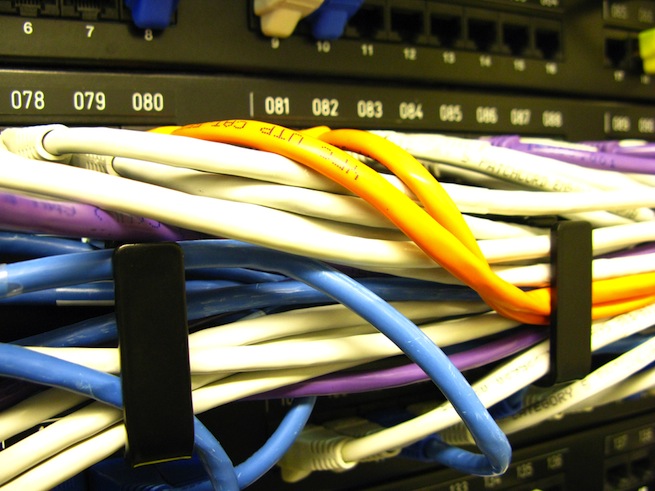It’s no secret that mobility, big data, and cloud computing have changed the way we work, interact, and access data. Today’s workforce has more tools to do more things from more locations than ever before. But what if I told you that it was all built on a foundation ill-equipped to handle the job?
The unfortunate reality is that the underlying infrastructure – the way the information we receive, send, and consume is transmitted – is being stretched beyond its capabilities and that some of the promises of a better future are pinned on technologies that have yet to (and might never) fully emerge.
Underpinning these dramatic changes is a fundamental infrastructure player – the network. While the world and the way we use technology have been rapidly evolving, the network itself has remained largely unchanged. This dizzying rate of change combined with a static foundation has led to massive complexity, which is jeopardizing the way we connect and talk.
Enter software-defined networking (SDN)
Now, SDN has emerged and is promising to cure all that ails the network. So, what is it? At its most basic level, SDN creates a separation between the brains and the brawn of the network – the software that makes decisions and the hardware that carries out those decisions. This “decoupling” allows the network to centralize its intelligence, effectively pooling all information into a single location. The idea being that with a global view of the entire network, better decisions can be made about how exactly to handle communications.
Editor’s note: Want to learn more about SDN, and how businesses are incorporating it into their new hybrid cloud environments? Our upcoming CloudBeat conference, Sept. 9-10 in San Francisco, will be tackling revolutionary cases of enterprise cloud usage. Register today!
While the concept is admirable, for it to truly take off, it has to be widespread. The problem: Even industry insiders cannot agree fully on what it is or how it ought to work. Consensus is difficult when technology is nascent, and the fact that vendors bring with them their own corporate agendas makes the challenge even more difficult. That’s not to say that progress is not being made or that success is unachievable; there are bright spots.
SDN: The equalizer
Perhaps the brightest spot can be found in an industry initiative that is backed by both the large, entrenched players like Cisco and new upstarts like Plexxi. This effort, called OpenDaylight, is an open source project to create the software-defined “brains” that will drive the next generation of networking “brawns.” In its first few months of operation, OpenDaylight has nearly 10 individual approved projects, each offering a different piece of the puzzle. Ranging from protocols to security, these new proposals are signs that the industry is capable of the kind of collaboration necessary to make SDN a reality.
Could perception squash adoption?
But not everyone is convinced that vendors hold the key to the future. Companies like Google and Facebook have already begun building their own tools to deliver scale and processing because today’s archaic infrastructure cannot keep up with their demand. With big business relying on the network, companies like these believe that the only way to move fast enough is to do it themselves (the message is clear regarding their perception of vendors’ ability to keep pace). For now, though, it appears that only a small number of hyper-scale players are willing to go this route; but with new startups aimed precisely at DIY networking, some people (companies like Cumulus Networks and Pica8) are betting that this trend will continue.
Ultimately, opportunity will prevail
There is no greater motivator than opportunity, and SDN marks the largest business opportunity in the networking industry since its inception. Recent reports estimate the business impact tied to SDN could be as high as $35 billion by 2018, which represents nearly 40 percent of the overall networking industry.
While the marketing hype makes it seem like adoption will be immediate, it will ultimately take some time. SDN isn’t just a technology change; it represents a transformation of an entire industry. There will be organizational hurdles as IT silos collapse, tools and processes that must transition, and a workforce that must acquire new skills to be capable of operating in a highly orchestrated and automated environment. Ironically, this means the largest dependency for SDN to succeed is on the very people who demand it.
 Michael Bushong is VP of Marketing at Plexxi. He previously spent 12 years at Juniper Networks, where he led product management, product strategy, and product marketing organizations for Juniper’s flagship operating system, Junos. He spent the last several years at Juniper leading their SDN efforts across both service provider and enterprise markets. Prior to Juniper, Michael spent time at database supplier Sybase, and ASIC design tool companies Synopsis and Magma Design Automation.
Michael Bushong is VP of Marketing at Plexxi. He previously spent 12 years at Juniper Networks, where he led product management, product strategy, and product marketing organizations for Juniper’s flagship operating system, Junos. He spent the last several years at Juniper leading their SDN efforts across both service provider and enterprise markets. Prior to Juniper, Michael spent time at database supplier Sybase, and ASIC design tool companies Synopsis and Magma Design Automation.
VentureBeat's mission is to be a digital town square for technical decision-makers to gain knowledge about transformative enterprise technology and transact. Learn More

